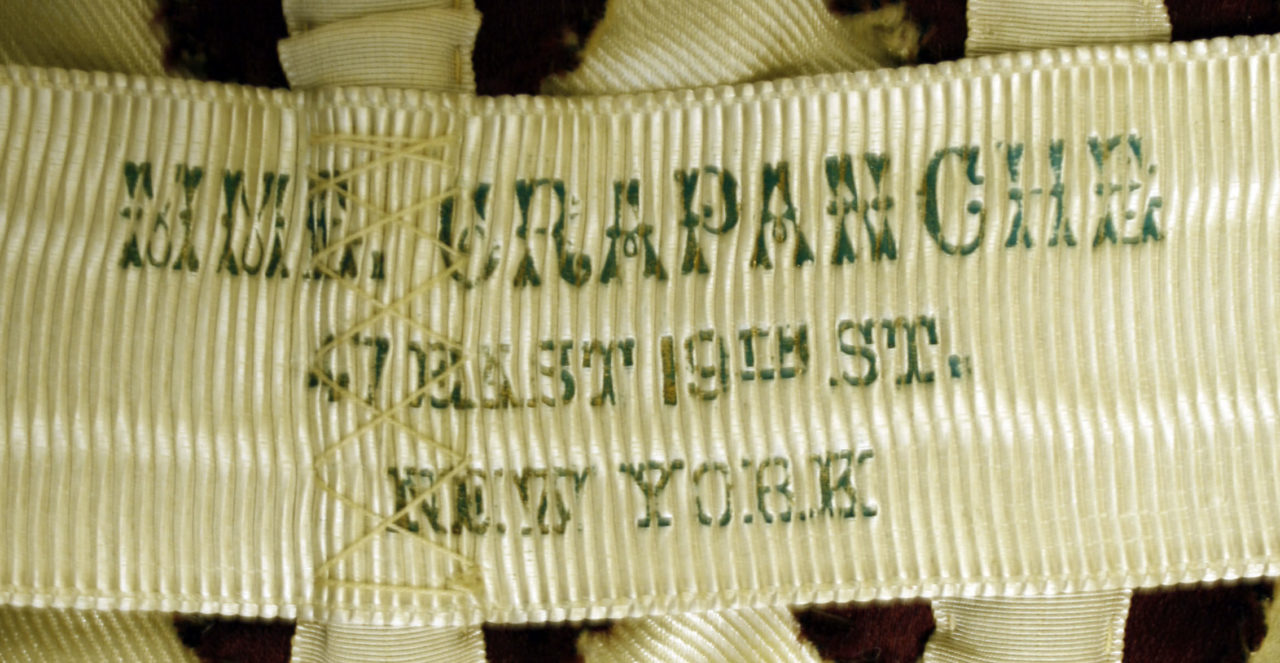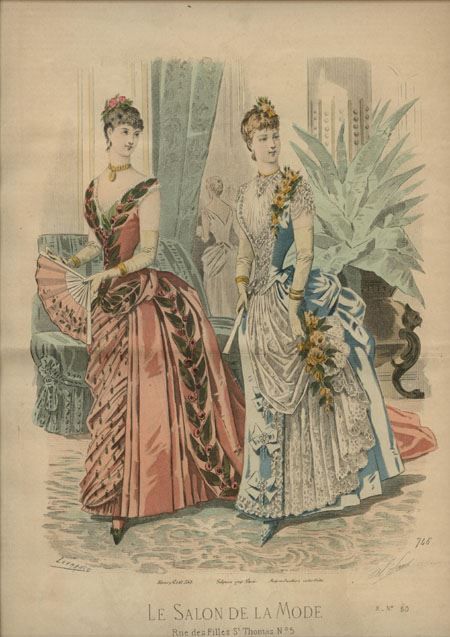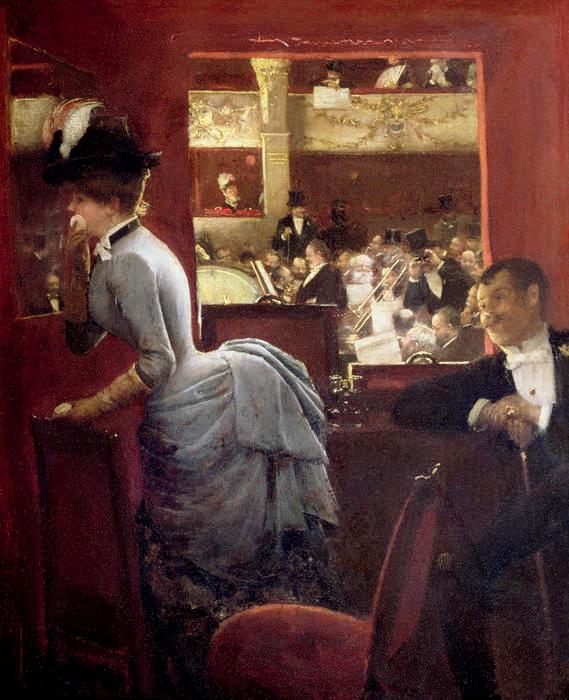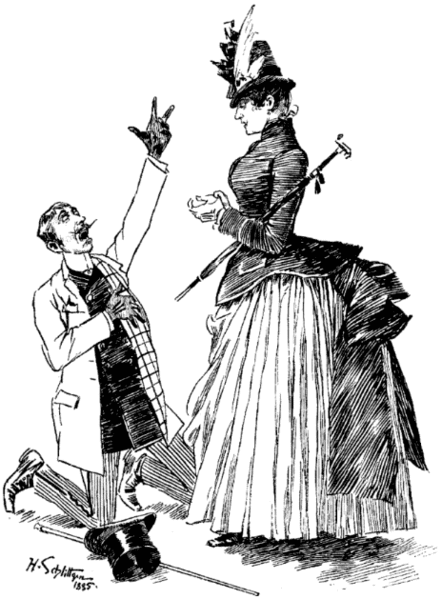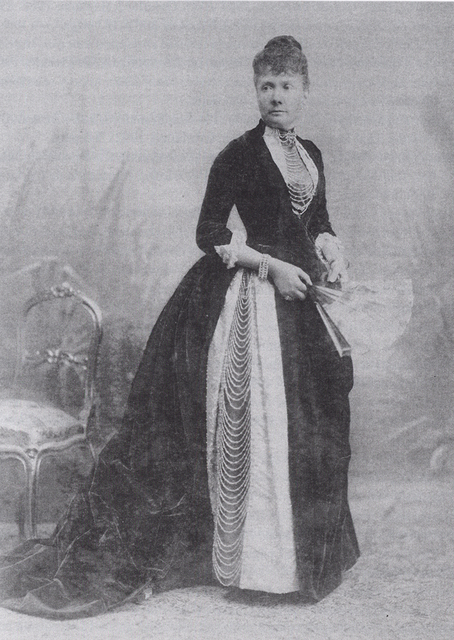A pinnacle of 1880s fashion, this bustled gown’s many intricate style details, full silhouette, and bright red color make it a dress to be admired now and envied then.
About the Look
This dress from approximately 1884-1886 is an elegant two-piece dinner dress created during the 1880s revival of the bustle. It is constructed of red and orange-gold silk taffeta and black velvet. The top of the gown is a structured bodice made of over 15 individual panels. It has a low square neckline and set-in three-quarter length sleeves. The cuff of the sleeve is adorned with a silk bow and a tiny detail of ivory cotton lace. The bodice closes with a row of red silk shank buttons and eyelets down center front.
Fig. 1 - Mme Grapanche (American). Dinner dress, 1884-1886. Silk. New York: The Metropolitan Museum of Art, C.I.63.23.3a, b. Gift of Mrs. J. Randall Creel, 1963. Source: The Metropolitan Museum of Art
The rear of the bodice is extended and curved to sit over the bustle of the skirt. The voluptuous skirt is nothing less than awe-inspiring as red and gold silk are manipulated in numerous techniques. The front of the skirt drapes on the bias, alternating red, gold, and red. The side seam of the skirt is hidden in a panel of gold knife pleats. The pleats are held down by three pentagonal stripes of top-stitched black velvet.
The back of the skirt blousons at the top in a series of complex gathers and bunches, where the silk then drops into a long and magnificent train. The volume of the skirt is held up by some sort of wire or padded bustle structure underneath. Finally, the hem of the skirt is finished with three short rows of alternating color knife pleats. A ruffle of lace underneath the hem mimics the lace detail on the sleeve and would have protected the silk of the skirt. The fullness of the skirt in addition to the numerous design details were typical of the “more is more” mindset of the mid 1880s, which saw an increase in the size of the skirt in comparison to previous years. This gown was created by American designer Madame Grapanche, whose studio was located at 47 E. 19th St in New York City (Fig. 1).
Mme Grapanche (American). Dinner Dress, 1884-1886. (New York). Red and gold silk taffeta, black velvet. Metropolitan Museum of Art, C.I.63.23.3a,b. Gift of Mrs. J. Randall Creel, 1963. Source: Metropolitan Museum of Art.
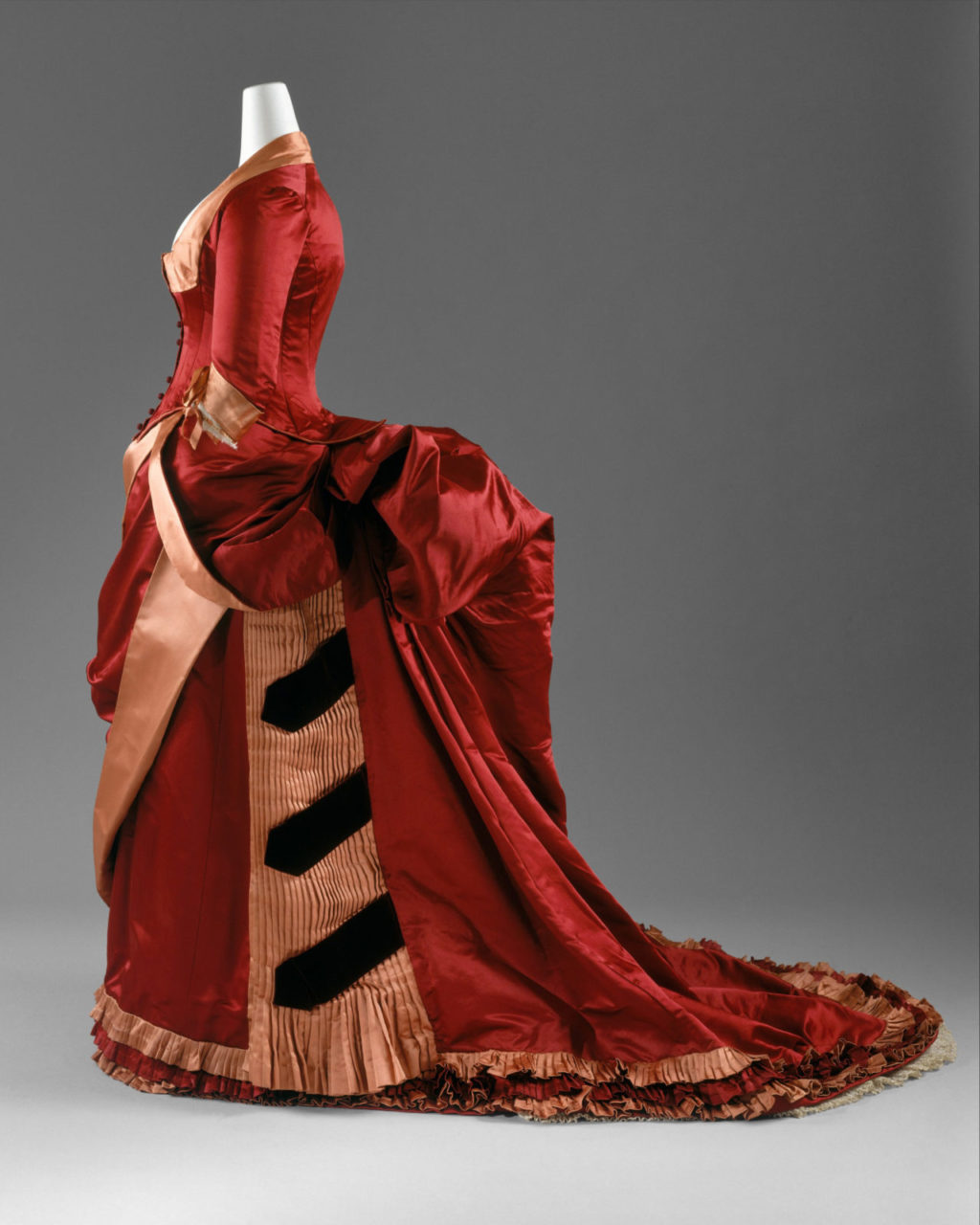
About the context
T
he bustle reached its greatest volume by 1885, and fashion plates of the time often featured the style. An 1885 fashion plate from Le Salon de la Mode features a red evening dress that is trimmed in a very similar fashion (Fig. 2), though it lacks the sleeves that our dinner dress features. The mid 1880s were years of decadence and grandeur, as many different pleating, gathering, and appliquéing techniques were utilized to mark the dress as the epitome of fashion. The Metropolitan Museum of Art writes of the style:
“The bustle was at its greatest extension by 1885. It was almost perpendicular to the back and heavily upholstered. The 1880s versions were as padded and heavily embellished as a drawing-room hassock of the period. It was a popular conceit that the cantilevers of these bustles could support an entire tea service. To sustain the greater weight of the 1880s gowns, light and flexible infrastructures were created with flexible materials–wire, cane, whalebone–held together by canvas tapes or inserted into quilted channels.”
Fig. 2 - Artist unknown. Le Salon de la Mode, 1885. Source: Pinterest
Fig. 3 - Jean Béraud (French, 1848-1935). La baignoire, au théâtre des Variétés, 1883. Oil on canvas; 49 x 40.5 cm. Paris: Musée Carnavalet, P1743. legs de M. Armand Dorville, 1944. Source: RMN
Fig. 4 - Jean Louis Forain (French, 1852-1931). The Public Garden, 1884. Oil on canvas; 54.9 x 45.7 cm (21.61 x 17.99 in). Private Collection. Source: The Athenaeum
Fig. 5 - H. Schlittzen. Caricature of a Proposal, 1885. Source: Wikimedia
Fig. 6 - Photographer unknown. Princess Isabel "La Chata" of Asturias, 1886. Private Collection. Source: Pinterest
The allure of the bustle and the silhouette it created are undeniable as many works of art were created to emphasize its draw over men; see, for example, Jean Béraud’s 1883 La baignoire, au théâtre des Variétés (Fig. 3). Specifically, the color red was particularly eye-catching; a woman in red was sure to stand out, as illustrated in Jean Louis Forain’s The Public Garden (Fig. 4). Godey’s Lady’s Book writes in October 1884: “Of deep reds there is an abundance” (415).
One caricature (Fig. 5) dramatizes the power of this extreme fashion which has brought a man to not one, but both of his knees. Even royalty was not immune to the charms of the oversized bustle draped in colorful silks, as seen in a photograph of Princess Isabel “La Chata” of Asturias (Fig. 6).
In addition to its fashionable silhouette and bold color, the details of this dress follow the style guidelines set by a number of fashion journals. This dress features a double apron as was advised in Godey’s Lady’s Book in October 1884:
“Double aprons are seen on French dresses; these are sometimes of one material, but may also be of the two fabrics combined in a dress…” (415)
Overall, the bold style was well received by the public and worn over and over again.
References:
- “Dinner Dress.” The Metropolitan Museum of Art. Accessed August 13, 2018. https://metmuseum.org/art/collection/search/82880.
- “Fashions.” Godey’s Magazine 6, no. 652 (October 1884): 410–15. https://books.google.com/books?id=fdE9AQAAMAAJ&pg=RA2-PR38-IA356#v=onepage&q&f=false.


